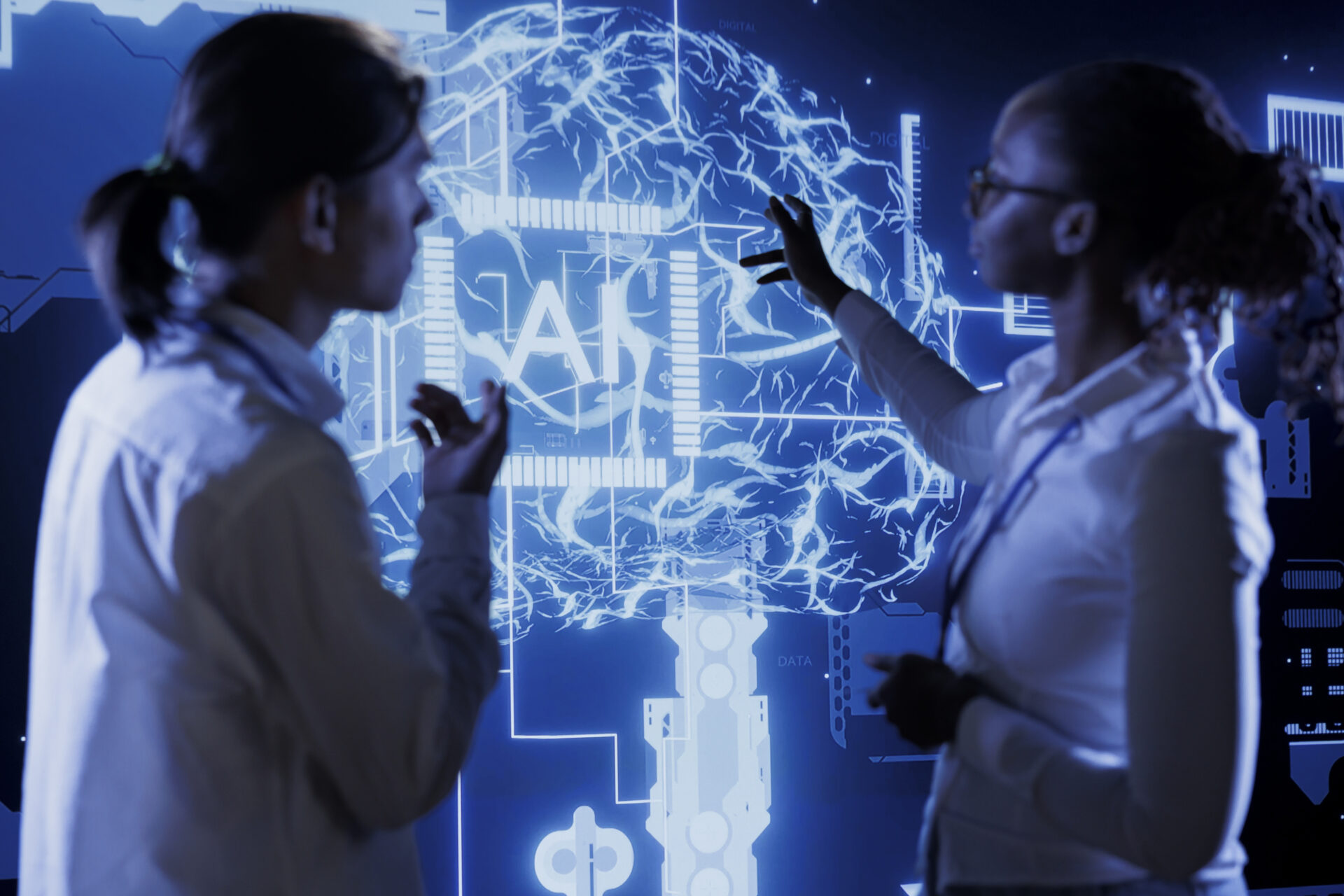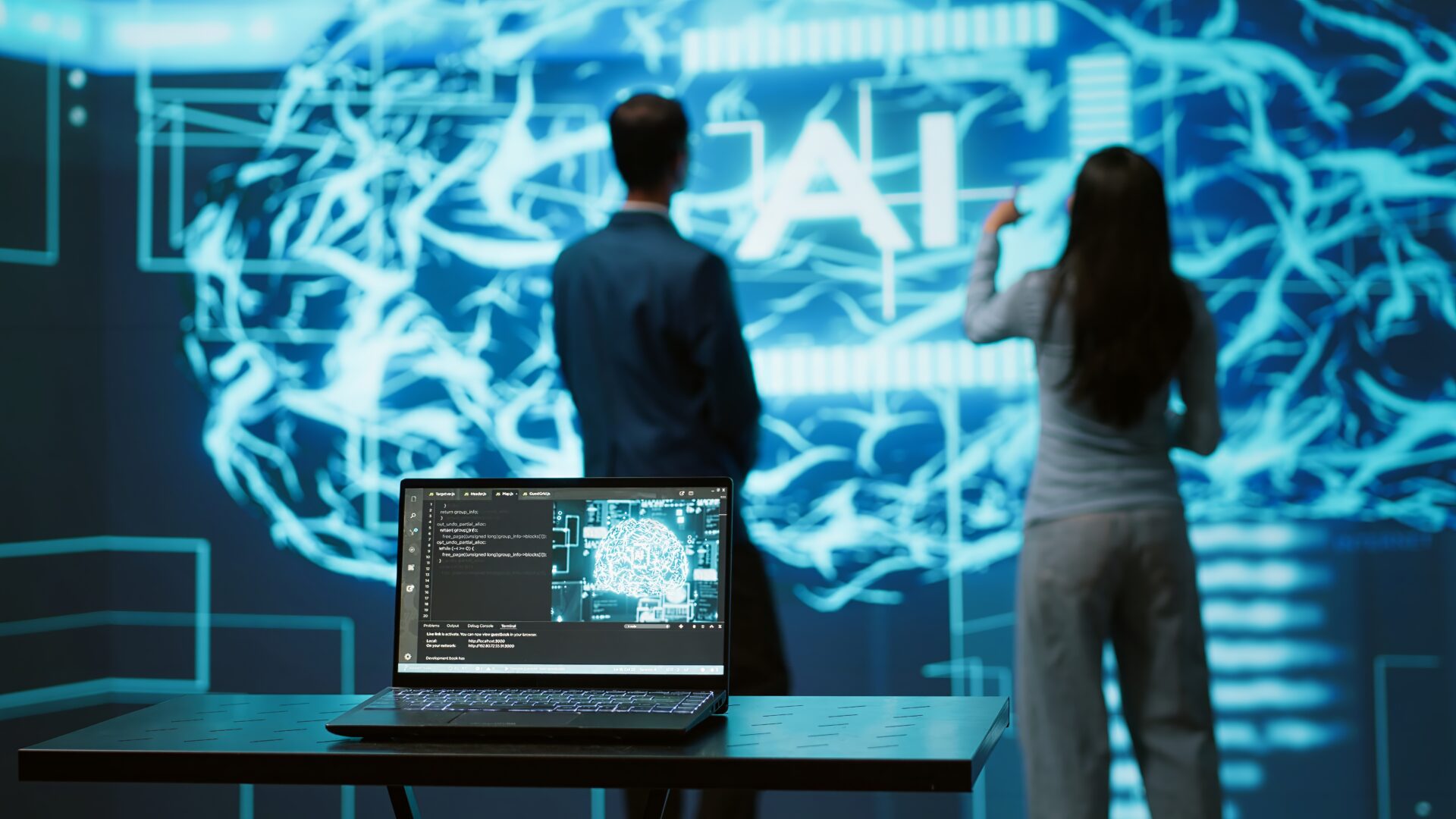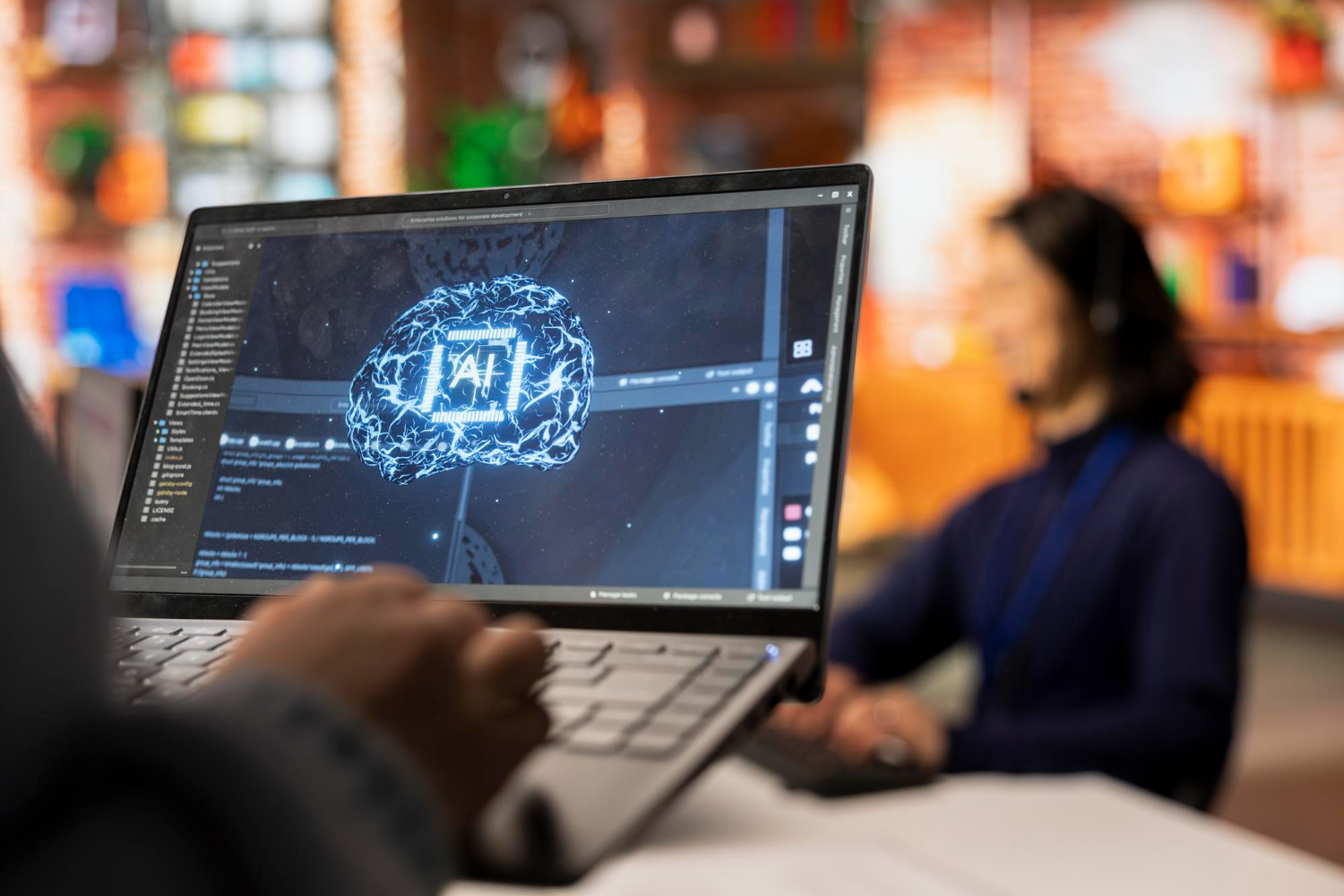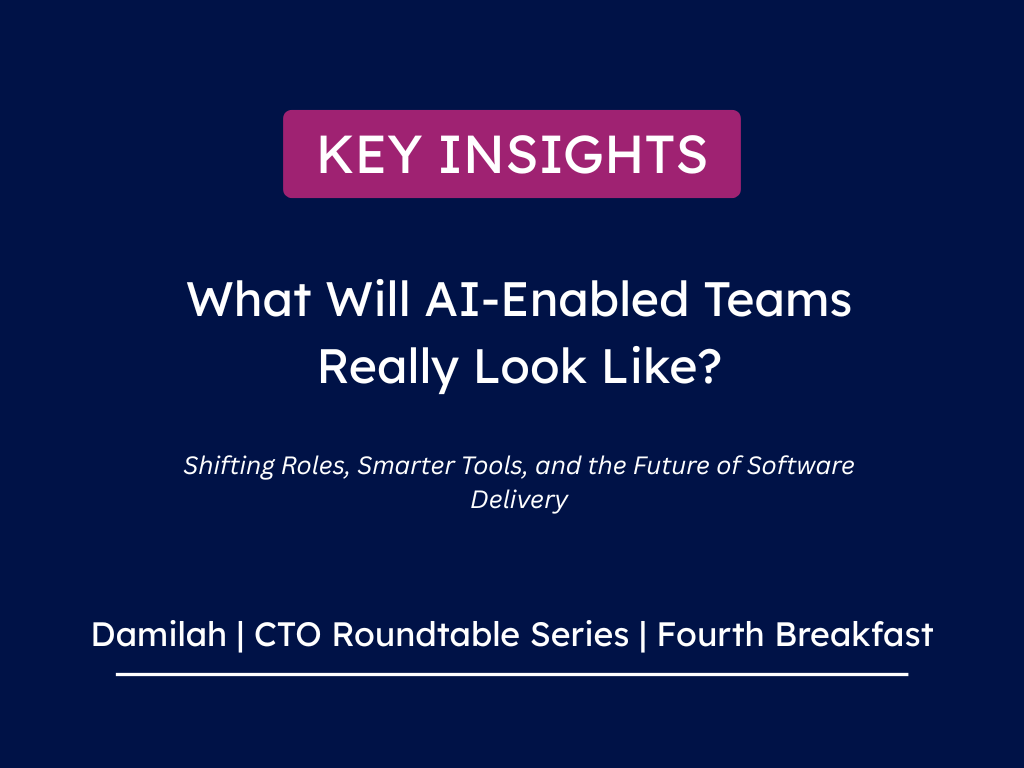Damilah | CTO Roundtable Series | Fourth Breakfast
What Will AI-Enabled Teams Really Look Like?
Shifting Roles, Smarter Tools, and the Future of Software Delivery
KEY TAKEAWAYS
Introduction
This roundtable brought together CTOs, heads of engineering, architects, and product leaders from across sectors—finance, retail, government, education, and energy—to explore how technology teams will evolve over the next two years as AI becomes a core enabler of productivity and creativity.
Rather than trading notes on which tools are trending, the discussion focused on people, culture, and capability: how to steer teams through this transformation responsibly. There was a strong sense that AI is revolutionising the how of engineering, but not the why.
As one CTO said: “AI can write the code, but it can’t design the solution, own the outcome, or understand what the customer truly needs.”

The central thread of the morning was clear: AI will change the texture of work and accelerate delivery, but the human element—judgment, empathy, and collaboration—will only grow in importance.
Will Developers Disappear?
Few participants believed AI would replace engineers outright. Instead, the consensus was that roles would evolve.
“I’d be very surprised if we wipe out software developers in two years,” one engineering manager remarked. “It’s moving fast, but the tools still produce too much that’s subtly wrong in ways that’ll hurt you later.”
While AI is now taking on more junior and mid-level coding work—automating refactors, bug fixes, and boilerplate—participants agreed that experienced human oversight remains critical. The bigger question was how to ensure junior developers continue to learn the craft. One CTO captured the concern well:
“If AI does all the grunt work, where do the juniors cut their teeth?”
Several argued for creating structured apprenticeships and guided learning environments where early-career engineers can pair with AI tools while still learning principles of architecture, quality, and design.
The Changing Shape of Teams
The conversation repeatedly returned to how AI is collapsing traditional boundaries. Titles like front-end, back-end, tester, and DevOps are blurring. Teams are becoming cross-functional units focused on problems, not functions.

“We’re hiring problem solvers, not just coders,” one CTO explained. “They’ll do whatever’s required—design, infrastructure, deployment, even user research—because AI makes it possible to wear multiple hats.”
The archetype of the future is the “product engineer”—someone equally comfortable exploring business context, shaping solutions, and delivering production-quality systems with AI as a partner. Architects, QA, and SRE roles will continue to grow in strategic importance, ensuring accountability and coherence as delivery accelerates.
The Human Element: Judgment, Empathy, and Curiosity
Every leader emphasised that AI doesn’t eliminate human creativity—it demands more of it. The ability to ask good questions, challenge assumptions, and apply judgment has become even more valuable.
“Curiosity is the new superpower,” one CTO said. “The people who’ll thrive are those who keep testing the boundaries of what these tools can do—and when to stop trusting them.”
Curiosity, empathy, and communication are now as vital as technical skill. Engineers must understand how their work fits into business value and user experience.
AI amplifies output—but only humans can decide what matters and why.
Governance and Accountability
The hardest friction isn’t technical—it’s institutional. Risk, legal, and compliance teams are anxious about ownership, data exposure, and IP liability.
“Our biggest problem is fear built on lack of understanding, not lack of capability,” said one chief architect.
Several companies are creating AI governance frameworks: approved tool lists, role-based permissions, “human-in-the-loop” release gates, and model benchmarking standards. Others are reframing compliance by demonstrating that AI can mitigate existing risks—speeding up regulatory delivery, identifying vulnerabilities, and improving audit trails. As one participant summarised:
“Governance shouldn’t be a brake. It should be a seatbelt—something that lets you go faster safely.”
From Tools to Platforms
The group warned against uncontrolled “tool sprawl.” Hundreds of disconnected AI apps create fragmentation, data risk, and confusion. Many are now consolidating around agentic platforms that combine flexibility with control—enabling teams to plug in models, enforce policies, and swap components safely.
“We don’t let every team choose their own CRM; why would we let them choose their own AI stack?” one CTO asked.
These emerging AI operating environments balance innovation and governance. Over time, they’ll evolve into multi-agent systems, where AI components handle specific roles—code review, compliance, testing—under human orchestration and oversight.
Proximity, Collaboration, and Speed
AI is reshaping the pace of work. Teams can now ship prototypes and validate ideas at unprecedented speed—but that velocity brings new coordination challenges. Participants agreed that proximity is becoming more, not less, important.
“Customers want answers now, not after someone in another time zone wakes up,” one delivery lead said. While remote and offshore teams remain valuable, they must be self-contained and empowered, not reliant on serial handoffs.
AI makes it possible for smaller, tighter, cross-functional groups to deliver end-to-end. But success depends on communication, shared context, and immediacy of feedback—qualities easier to sustain when teams are close to each other and to their users.
As one CTO put it, “AI may erase distance in code, but not in understanding. Proximity is still what creates trust, clarity, and speed.”
Legacy Systems and Reverse Engineering
Participants shared how AI is transforming work on legacy systems—mapping ancient codebases, diagnosing defects, and even converting entire applications.
“We migrated a five-year Python system to C# in a month using AI,” one CTO recounted.

But all agreed that architectural judgment remains a human responsibility: deciding what’s worth rebuilding versus replacing.
The Multi-Agent Future
Looking ahead, many expect the rise of multi-agent systems—AI agents working collaboratively across roles and contexts.
“We’re moving from assistants to collaborators,” one participant said. “Dozens of agents will handle testing, compliance, documentation—while humans set the rules and decide what’s safe to ship.”
This evolution raises deep questions about accountability and verification. The group agreed: no matter how advanced the tools become, humans remain the final line of trust.
Key Takeaways
- AI will reshape roles, not remove people. Engineers remain central—owning design, ethics, and accountability. The future belongs to product engineers and technical leaders who can orchestrate AI, not compete with it.
- Human curiosity and breadth are strategic advantages. The best technologists will pair analytical depth with creativity, empathy, and adaptability. Curiosity is what keeps teams learning as tools evolve.
- Proximity drives performance. Speed and quality depend on teams being close—to each other and to their customers. AI may accelerate delivery, but true understanding still requires human connection, conversation, and shared context.
- Governance must empower, not constrain. Treat compliance frameworks as guardrails, not red tape. Maintain human checkpoints for quality, security, and ethical integrity.
- Build for the agentic future. Consolidate tooling into managed AI platforms, design for human oversight, and prepare for multi-agent workflows that handle routine tasks while people focus on direction and design.
Closing Thought
The roundtable left everyone with plenty to reflect on. The consensus?
We’re at the beginning of a generational shift. AI won’t replace engineering teams—but it will reshape them. The organisations that succeed will be those that invest in people, build cross-functional trust, and prepare now for the platforms, roles, and rhythms of the AI-native future.
Next, we’ll be launching a survey to explore what engineering teams could look like in 2028—asking industry leaders how they envision the structure, roles, and skills of future AI-native teams. We’ll share the results at CTO Craft Con in London in March 2026.
Thanks to everyone who joined us.
We’ll keep these discussions going, helping engineering leaders navigate the real changes AI is bringing to our teams and organisations.
Explore more: Find related articles on our Blog
-

Damilah | CTO Roundtable Series | Fourth Breakfast
What Will AI-Enabled Teams Really Look Like? Shifting Roles, Smarter Tools, and the Future of Software Delivery KEY TAKEAWAYS Introduction This roundtable brought together CTOs, heads of engineering, architects, and product leaders from across sectors—finance, retail, government, education, and energy—to explore how technology teams will evolve over the next two years as AI becomes a core enabler…
-

Damilah | CTO Roundtable Series | Third Breakfast
Exploring the Shape of AI-Enabled Software Teams of the Future: Roles, Responsibilities, AI Tools and Agents across the SDLC KEY TAKEAWAYS How AI Is Changing the Shape of Engineering Teams For our third CTO Breakfast Roundtable, we brought together CTOs, Heads of Engineering, Product leaders, and investment partners for a direct, practical discussion: What will our…
eBook

